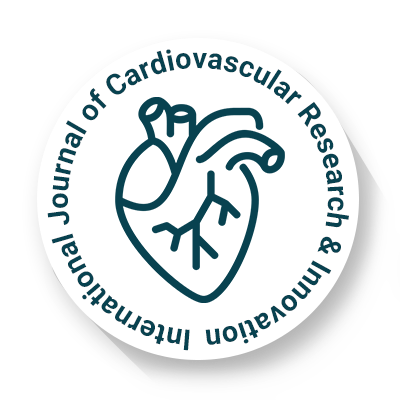
International Journal of Cardiovascular Research & Innovation
OPEN ACCESS

OPEN ACCESS
Transcatheter Aortic Valve Replacement represents a major innovation in cardiovascular medicine, offering a less invasive option compared to open-heart surgery for the management of severe aortic stenosis. The aortic valve is responsible for modulating blood flow from the heart to systemic circulation and, with time becomes narrowed and calcified, thus impairing circulation and placing tremendous strain on cardiac function. If untreated, it leads to disabling symptoms, reduced quality of life, and increased risk of heart failure or sudden cardiac death.
Traditional surgical aortic valve replacement (SAVR) has long been the standard treatment for aortic stenosis, but it involves significant operative risks, particularly for elderly patients or those with multiple comorbidities. TAVR, by contrast, allows for valve replacement via catheter-based techniques, eliminating the need for open-chest surgery. This procedure is performed by threading a collapsible bioprosthetic valve through a catheter—typically inserted via the femoral artery—and deploying it within the diseased native valve. Once expanded, the new valve restores proper blood flow, instantly alleviating symptoms and improving cardiac efficiency.
The quick development of TAVR technology has broadened its use, one limited to high-risk patients, now more commonly applied to intermediate- and even low-risk patients. Value technology, delivery systems, and techniques have evolved to dramatically enhance outcomes by minimizing complications, such as paravalvular regurgitation, conduction disturbances, and vascular damage. Improvements in imaging modalities, such as real-time echocardiographic and fluoroscopic imaging, have maximized accuracy in valve delivery, allowing for improved durability and hemodynamic function.
Perhaps the strongest benefit of TAVR is its effect on patient recovery. In contrast to open surgery, in which patients must spend days in the hospital and weeks in rehabilitation, TAVR patients tend to recover quickly with symptom relief and resume normal life in a matter of days. The minimally invasive procedure reduces trauma, infection, and overall post-procedure complications, making it the first option for increasingly more patients.
With progressive research in TAVR, exploration of new materials, and the next-generation valve platforms continue to redefine structure heart disease treatment options. Polymer-based and tissue-engineered valve research tries to enhance long-term durability, dispelling valve degeneration concerns over time. Moreover, ongoing clinical trials are evaluating the feasibility of TAVR in bicuspid aortic valve disease, young patients, and those with concomitant coronary disease, further broadening its clinical indications.
In addition to technological innovation, the use of artificial intelligence and machine learning in TAVR planning is also picking up speed. AI-driven algorithms support patient selection, procedure simulation, and outcome prediction and enable individualized treatment approaches according to one's anatomical and clinical profile. As these technologies are being incorporated into established cardiovascular models, they are potentially able to improve decision-making and improve procedural success rates. The International Journal of Cardiovascular Research & Innovation is dedicated to showcasing innovative research in transcatheter valve therapy, fostering scientific debate, and driving innovation in cardiovascular interventions. With the transformation of TAVR, our journal remains committed to advancing the evolution of cardiac care, improving patient outcomes, and shaping the future of interventional cardiology.